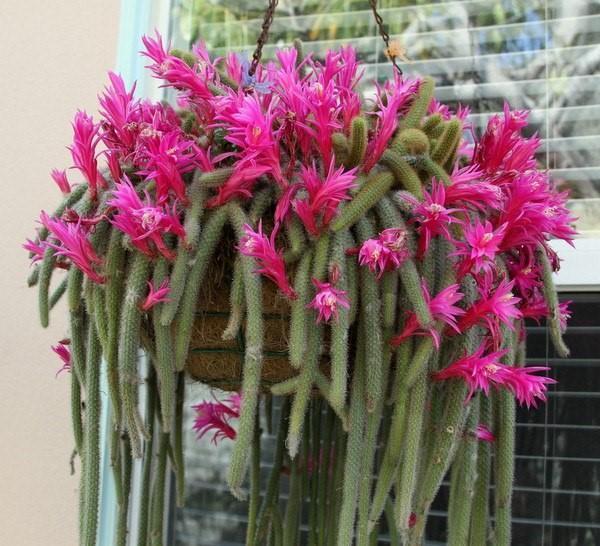The prickly ampelous miracle of nature aporocactus
 It would seem that experienced florists are no longer surprised with cacti. Scary and thorny, defenseless and thornless, in a pot or in a garden - they are grown by many lovers of these unpretentious plants. Do you know that there are ampelous cacti? Placed on a stand, these bushes smoothly lower their shoots down, presenting a unique sight. So let's get acquainted with aporocactus - an interesting variety of succulents.
It would seem that experienced florists are no longer surprised with cacti. Scary and thorny, defenseless and thornless, in a pot or in a garden - they are grown by many lovers of these unpretentious plants. Do you know that there are ampelous cacti? Placed on a stand, these bushes smoothly lower their shoots down, presenting a unique sight. So let's get acquainted with aporocactus - an interesting variety of succulents.
Both aporocactus and Decembrist belong to forest cacti, despite the absolute difference in their appearance.
What does a flower look like?
Aporocactus came to us from the mountain forests of Mexico, in which there is not very much moisture. This left an imprint on the character of the plant, making it resistant to drought and undemanding to light. From March to May, the cactus blooms: the whole bush is covered with beautiful raspberry or pink buds.
The plant itself consists of many rather thin and long shoots that resemble a rat's tail. At a young age, they are erect, but over time, under their own weight, they begin to droop and can grow up to 5 m in length. The shoots are painted in a rich green color, but closer to the top it turns into gray, sometimes even a slight red color appears. The stems themselves consist of low, almost imperceptible, edges covered with small spines.
How to care for a forest cactus?
In care, aporocactus is unpretentious:
- It is necessary to water the flower abundantly in summer, but by autumn the frequency of watering should be significantly reduced. At this time, the heat is no longer so much, and the moisture does not evaporate very quickly. Continuing to fill the bush, you can lose it as a result of decay.
- Oddly enough, but a lush bush is very fond of spraying, especially in the summer, when the weather is dry and hot
- The plant does not need frequent feeding. It is enough to make complex preparations once a month for blooming cacti.
- Like all forest cacti, aporocactus requires shading, since in natural conditions it is not used to being under the sun.
To lay flower buds, aporocactus must ensure a dry and cool winter. The air temperature in the room should not exceed 14 degrees Celsius, and watering should not be more than once a month and a half.
A warm wintering with more frequent watering will stimulate the cactus to grow the aboveground part, but in this case you will not see flowering.